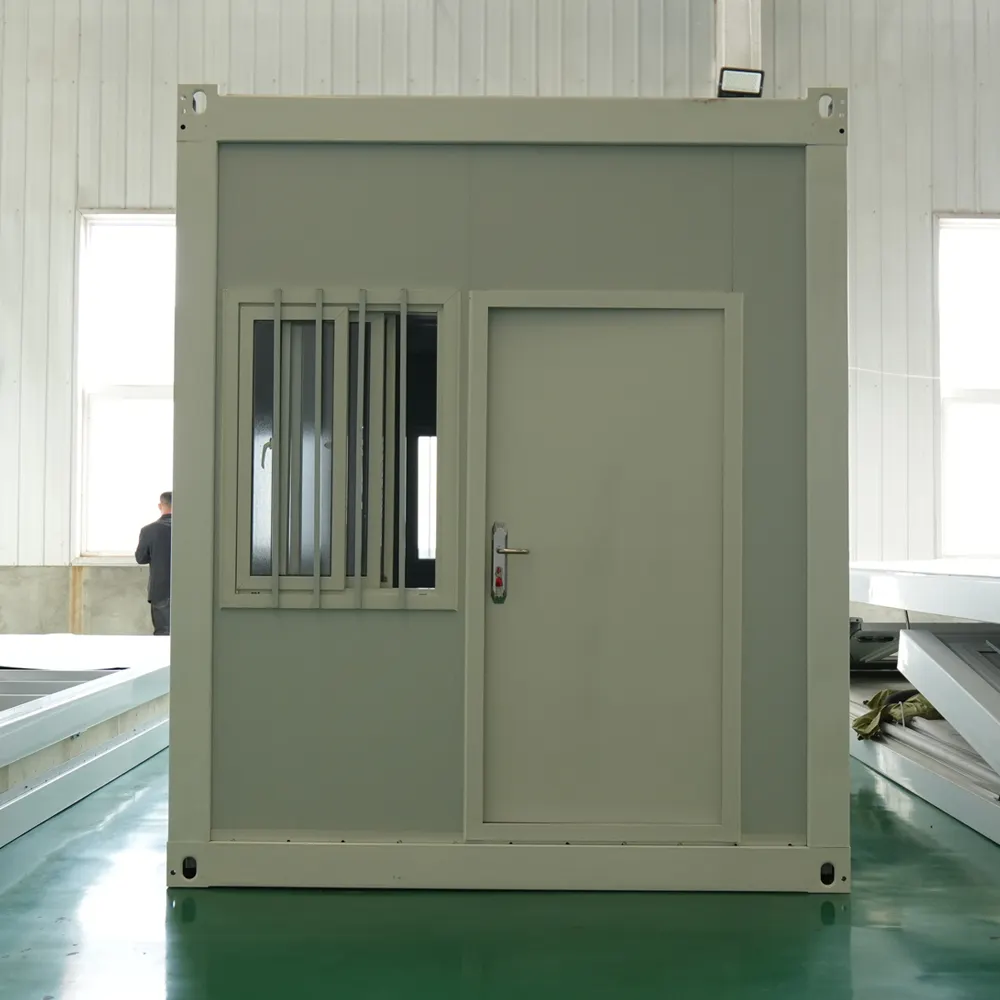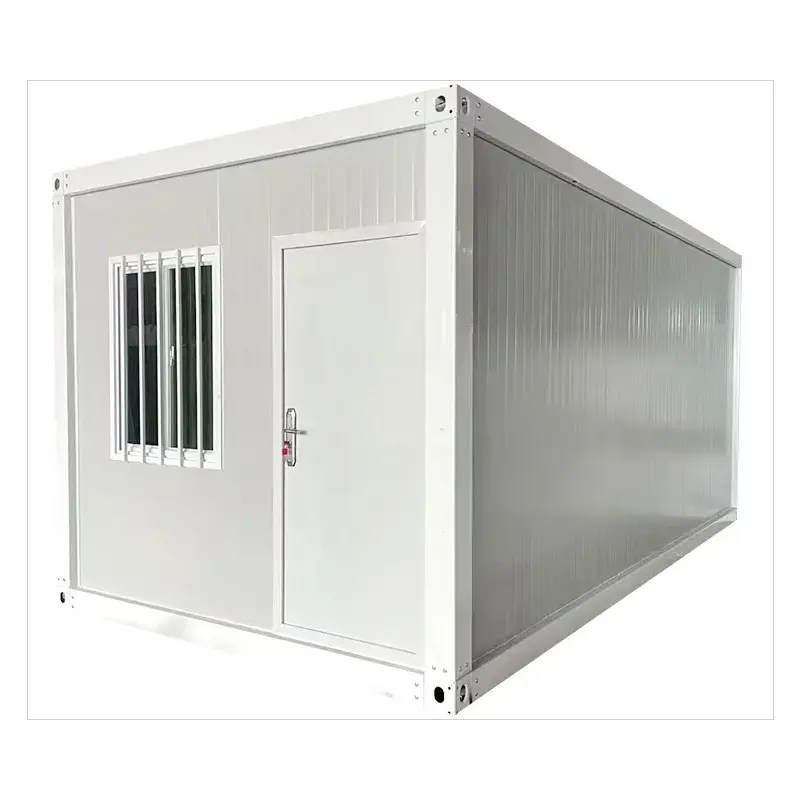The Importance of Sustainable Building Practices
The demand for sustainable housing has never been stronger, and the Prefab House has emerged as a leading solution. Built in controlled environments with modern processes, a Prefab House can integrate eco-friendly materials more effectively than traditional homes. This not only reduces waste but also ensures long-term benefits for the environment and homeowners. By prioritizing eco-conscious design, the Prefab House represents the future of residential construction where sustainability and modern living are perfectly aligned.
Eco-Friendly Building Materials
Recycled Steel and Metal Components
Recycled steel is one of the most common materials used in Prefab House construction. It is durable, long-lasting, and reduces the need for newly mined resources. Unlike wood, steel does not warp or degrade easily, which makes it ideal for structural frameworks. Using recycled metals also lowers carbon emissions, making Prefab Houses both strong and sustainable. The adoption of recycled steel demonstrates how modern construction can balance environmental responsibility with durability.
Engineered Wood Products
Engineered wood, such as cross-laminated timber or laminated veneer lumber, plays a critical role in Prefab House construction. These materials are made from smaller pieces of wood bonded together, reducing the need for large-scale deforestation. Engineered wood offers stability, resistance to warping, and superior load-bearing capacity. Prefab Houses that incorporate engineered wood strike a balance between natural aesthetics and sustainability. They provide the warmth of traditional wood while ensuring that fewer trees are cut down.
Insulation and Energy Efficiency
Recycled and Natural Insulation Materials
Insulation is vital for energy efficiency, and Prefab Houses often utilize eco-friendly options. Recycled denim, cellulose made from shredded newspapers, and sheep’s wool are becoming popular alternatives to traditional fiberglass. These materials not only reduce waste but also provide excellent thermal performance. A Prefab House built with natural insulation helps lower energy consumption, making heating and cooling more cost-effective while reducing environmental impact.
Green Roofing and Thermal Barriers
Modern Prefab Houses also explore advanced roofing materials like cool roofs, green roofs, and reflective coatings. These systems reduce heat absorption, keeping interiors cooler and reducing the need for air conditioning. Paired with eco-friendly insulation, these roofing solutions create Prefab Houses that are energy-efficient and environmentally responsible. Green roofing systems even improve air quality and provide natural habitats, making homes part of a larger sustainable ecosystem.

Sustainable Finishes and Interiors
Low-VOC Paints and Sealants
Indoor air quality is an important factor in modern living. Prefab Houses often use low-VOC (volatile organic compounds) paints and sealants that emit fewer harmful chemicals. This enhances the health and comfort of residents while supporting eco-friendly practices. A Prefab House built with sustainable finishes not only looks modern but also creates a safer indoor environment. Health-conscious homeowners increasingly prioritize these materials when selecting interior designs.
Recycled and Renewable Flooring Options
Flooring materials such as bamboo, cork, and recycled tiles are popular in Prefab House construction. Bamboo grows rapidly, making it one of the most renewable resources available, while cork is harvested without damaging the tree. Recycled glass or ceramic tiles also reduce landfill waste. These options provide stylish finishes that align with eco-friendly goals, allowing Prefab Houses to combine beauty with sustainability.
Water Conservation and Sustainable Systems
Rainwater Harvesting Integration
Many Prefab Houses incorporate rainwater harvesting systems that reduce reliance on municipal water supplies. Collected water can be used for irrigation, toilets, or even filtered for household use. This sustainable feature ensures that Prefab Houses conserve water, an increasingly critical resource. By integrating rainwater systems, these homes reflect a holistic approach to eco-friendly living.
Greywater Recycling Systems
Greywater systems reuse water from sinks, showers, and laundry for non-potable purposes such as irrigation. Prefab House designs that include greywater recycling contribute to significant water savings over time. By reducing wastewater and reusing resources, these systems support both environmental goals and cost savings for homeowners. Integrating such systems showcases how a Prefab House can move beyond construction materials to embrace complete sustainability.
The Future of Eco-Friendly Prefab Houses
Smart Energy Integration
The Prefab House of the future will not only rely on eco-friendly materials but also integrate renewable energy technologies. Solar panels, smart grids, and energy storage solutions will ensure greater independence from fossil fuels. Prefab Houses already lend themselves well to these technologies due to their modular design, making them adaptable and ready for the future. This integration reflects a commitment to greener living that goes beyond materials alone.
Expanding Use of Circular Economy Practices
Prefab Houses are well-positioned to embrace circular economy principles, where materials are reused, recycled, and repurposed throughout the home’s lifecycle. This reduces waste and ensures that resources remain in use longer. Manufacturers are increasingly exploring modular designs that allow components of a Prefab House to be repurposed or upgraded without discarding entire structures. This forward-looking approach demonstrates how eco-friendly construction can evolve continuously.
FAQ
What eco-friendly materials are most common in a Prefab House
Common materials include recycled steel, engineered wood, bamboo flooring, low-VOC paints, and natural insulation like wool or cellulose. These options combine durability with sustainability.
How does a Prefab House support energy efficiency
A Prefab House uses advanced insulation, eco-friendly roofing, and energy-efficient windows. These features reduce heating and cooling needs, lowering both energy bills and carbon footprints.
Are Prefab Houses more sustainable than traditional homes
Yes, Prefab Houses are often more sustainable because they minimize construction waste, use recycled or renewable materials, and integrate efficient systems for water and energy conservation.
Can eco-friendly Prefab Houses be customized
Absolutely. Homeowners can select finishes, flooring, and sustainable systems that reflect personal style while supporting eco-friendly goals. Prefab Houses are designed for flexibility and customization.

